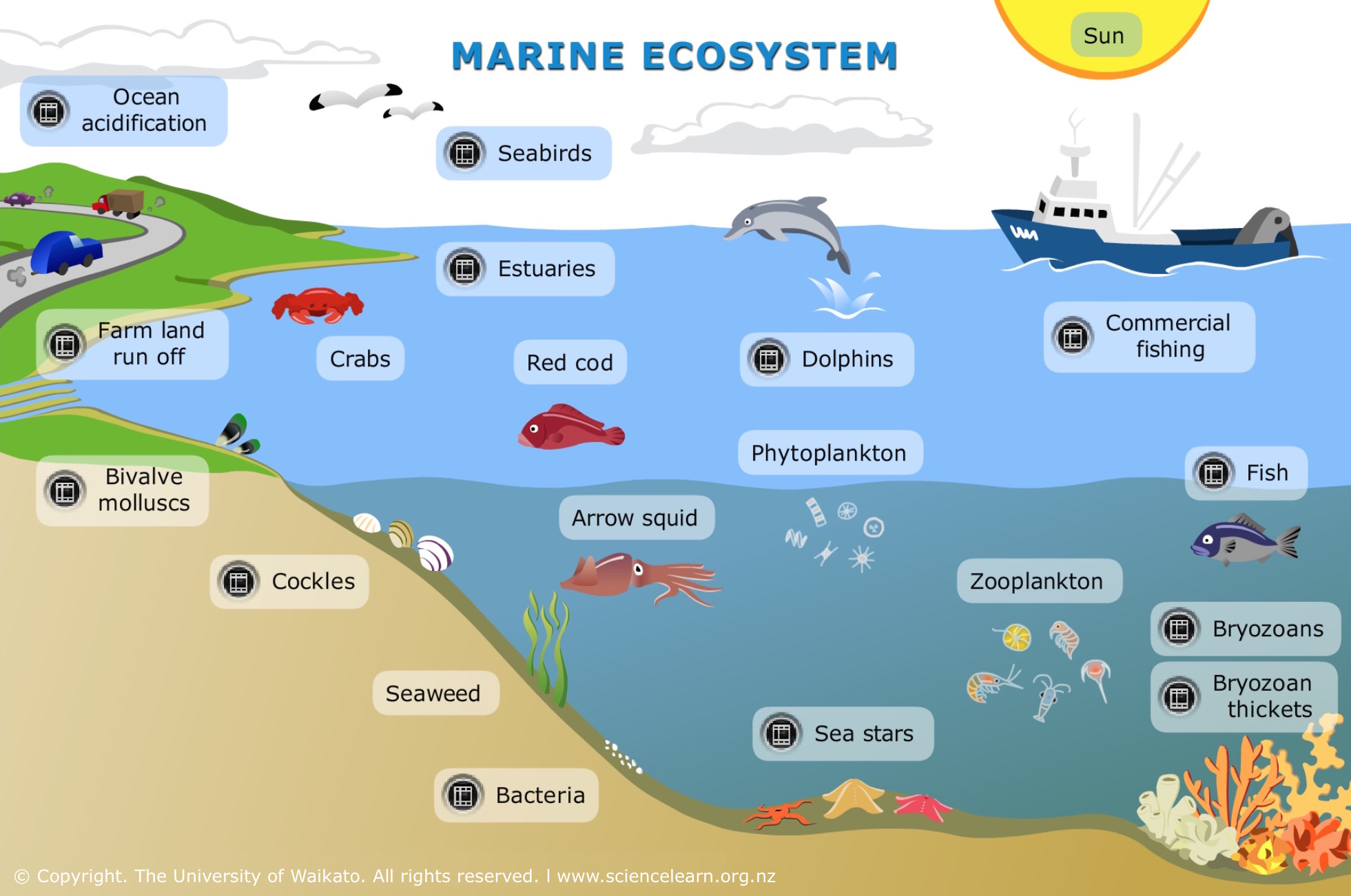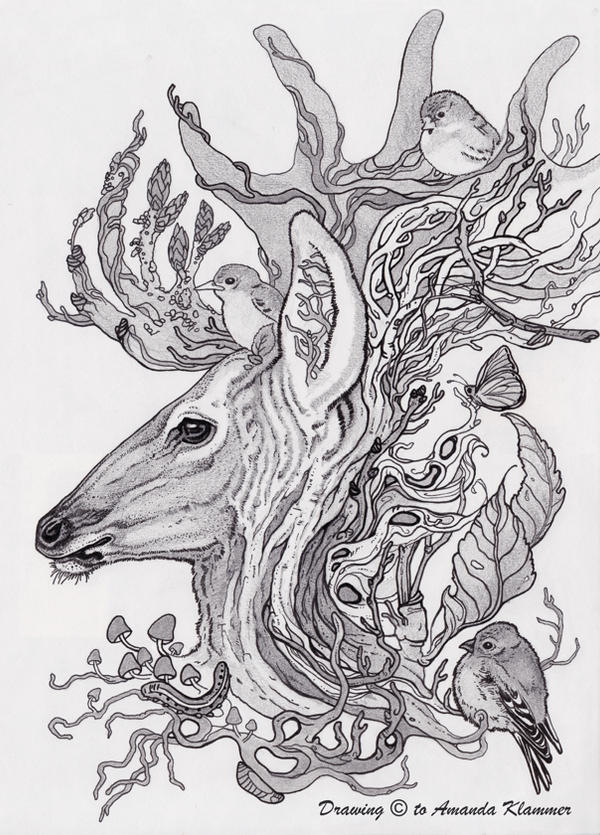Topic food web of grassland ecosystem: Discover the dynamic "Food Web of Grassland Ecosystem," a captivating exploration of the interconnected lives within these vibrant habitats. This introduction unveils the complexity and beauty of grassland ecosystems, inviting readers on an enlightening journey.
Table of Content
- How does the food web function in a grassland ecosystem?
- Key Components of the Grassland Ecosystem
- Primary Producers: The Foundation of the Food Web
- Primary Consumers: Herbivores in Grasslands
- Secondary and Tertiary Consumers: Predators and the Role of Carnivores
- Decomposers: Closing the Loop in the Food Web
- Impact of Introduced Species on Grassland Food Webs
- YOUTUBE: Food Web, Food Chain Examples in Grassland and Aquatic Ecosystems
- Comparative Analysis of Energy Flow in Grassland vs. Other Ecosystems
- Conservation Strategies: Preserving Biodiversity in Grassland Ecosystems
How does the food web function in a grassland ecosystem?
A food web in a grassland ecosystem is a complex network of interactions between plants, animals, and microorganisms. It shows the flow of energy and nutrients through the ecosystem.
In a grassland food web, the primary producers are plants such as grasses and shrubs. They use sunlight, water, and nutrients from the soil to produce food through photosynthesis.
Herbivores are the primary consumers in the grassland food web. They eat the plants for energy and nutrients. Examples of herbivores in grasslands can include insects, rabbits, and deer.
Next, there are secondary consumers that feed on the herbivores. These can be carnivorous animals like snakes, hawks, and coyotes. They obtain energy by consuming the herbivores.
There can also be tertiary consumers in the grassland food web. These are apex predators that feed on other predators. For example, a cougar could be a tertiary consumer that preys on smaller carnivores.
In addition to the primary, secondary, and tertiary consumers, there are decomposers in the grassland food web. These are microorganisms such as bacteria and fungi that break down dead organic matter, recycling nutrients back into the ecosystem.
The food web in a grassland ecosystem is interconnected, with many species relying on each other for survival. Changes to one population can have cascading effects on the entire ecosystem. For example, the decline in herbivore populations due to drought could lead to reduced food availability for carnivores.
Overall, the food web in a grassland ecosystem functions to facilitate the flow of energy and nutrients, maintain ecological balance, and support the diversity of species within the ecosystem.
READ MORE:
Key Components of the Grassland Ecosystem
The grassland ecosystem is a complex web of life, characterized by its diverse species and interactions that form its foundation. Understanding its key components is essential to appreciate the balance and dynamics of these vibrant ecosystems.
- Producers: Grasses dominate this landscape, serving as the primary food source for a myriad of herbivores. These plants convert sunlight into energy through photosynthesis, creating the base of the food web.
- Primary Consumers: Herbivores such as deer, zebras, and various insects consume the grass, transferring the sun"s energy through the ecosystem. Their feeding habits play a crucial role in shaping the vegetation structure and distribution.
- Secondary and Tertiary Consumers: Predators including wolves, birds of prey, and snakes feed on primary consumers, adding layers to the food web. These carnivores control the herbivore populations, maintaining ecological balance.
- Decomposers: Organisms like fungi, bacteria, and detritivores break down dead matter, returning nutrients to the soil, which supports plant growth and sustains the ecosystem"s cyclical nature.
- Abiotic Factors: Non-living elements such as sunlight, water, soil, and climate conditions influence the survival and distribution of species within the grassland ecosystem.
These components interact closely, forming a network of life that supports biodiversity and ecosystem services vital for our planet.
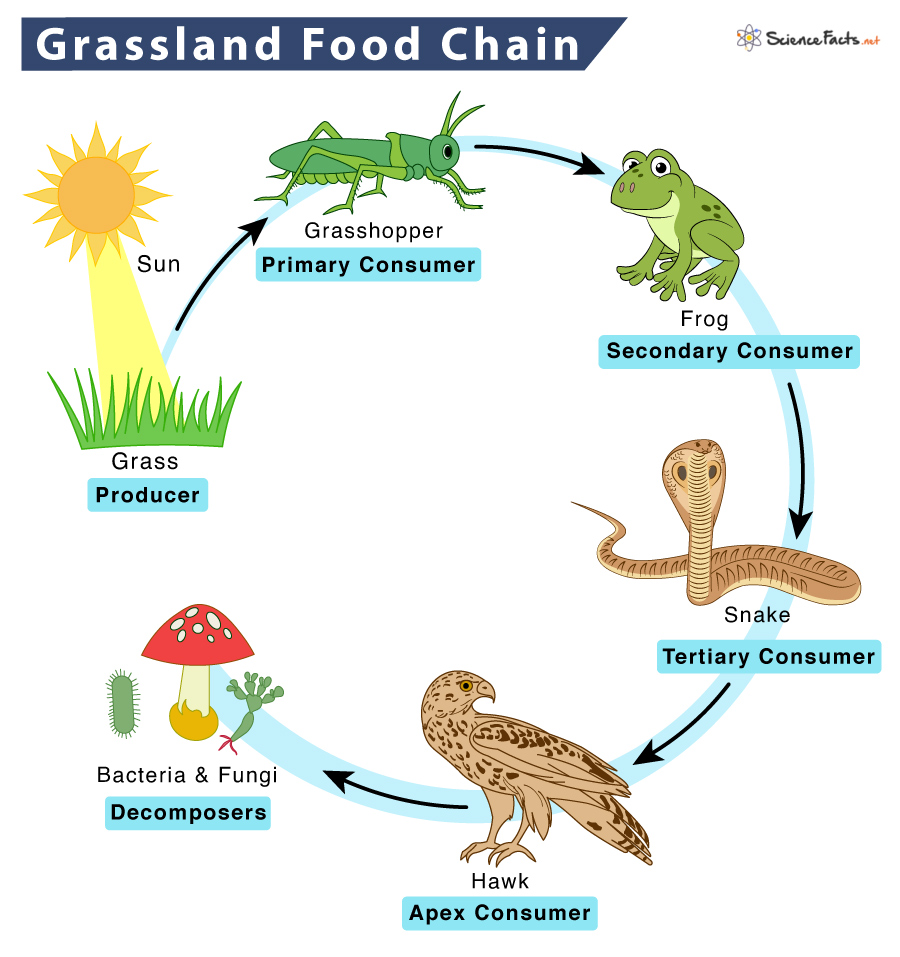
Primary Producers: The Foundation of the Food Web
Primary producers form the cornerstone of grassland ecosystems, harnessing the sun"s energy to fuel the food web. These organisms are not just the literal groundwork of their habitats but also the base upon which all other life depends.
- Grasses: The most prevalent and vital primary producers, grasses thrive in the open, sunlit conditions of grasslands. They utilize photosynthesis to convert sunlight into energy, forming the primary food source for many herbivores.
- Wildflowers: Besides grasses, a variety of wildflowers add to the biodiversity of grassland ecosystems. They attract pollinators such as bees and butterflies, contributing to plant reproduction and the food web"s complexity.
- Shrubs and Trees: While less common, some shrubs and trees can also act as primary producers in certain grassland areas, providing essential habitats and food for various wildlife species.
These primary producers not only support a wide range of herbivores but also play a critical role in carbon cycling, soil formation, and preventing erosion. Their ability to convert inorganic substances into organic matter through photosynthesis is a fundamental ecological process, underpinning the survival and diversity of grassland communities.
Primary Consumers: Herbivores in Grasslands
Primary consumers play a crucial role in grassland ecosystems, acting as the bridge between the sun"s energy captured by plants and the rest of the food web. These herbivores range from small insects to large mammals, each contributing to the balance and diversity of grasslands.
- Insects: Grasshoppers, butterflies, and beetles feed on grasses and wildflowers, serving as important pollinators and a food source for higher trophic levels.
- Rodents: Mice, voles, and prairie dogs consume seeds and plants, influencing the composition and distribution of vegetation through their foraging activities.
- Larger Herbivores: Bison, antelope, and zebras graze on the vast expanses of grass, shaping the landscape and preventing any single species from dominating the environment.
These primary consumers are essential for nutrient cycling, dispersing seeds, and maintaining soil health through their eating habits. Their presence and behavior also help to control the plant populations, ensuring a diverse and healthy grassland ecosystem.
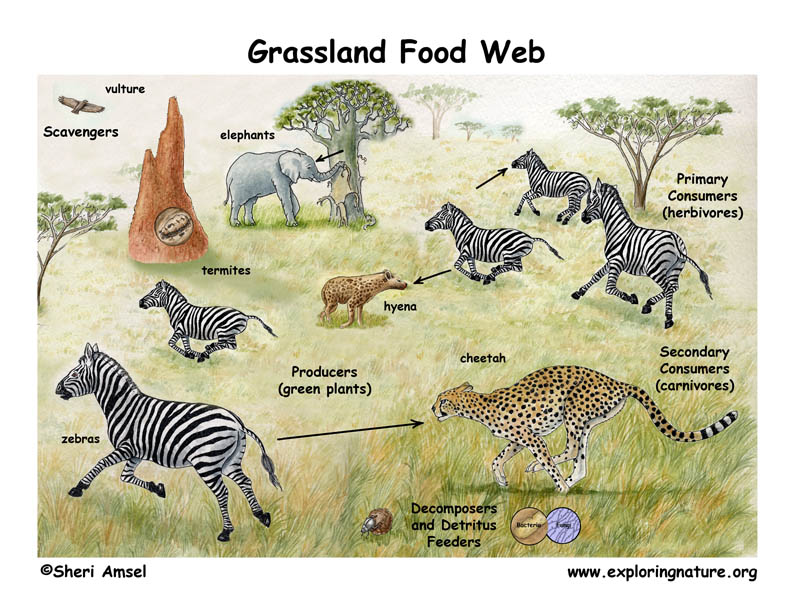
Secondary and Tertiary Consumers: Predators and the Role of Carnivores
Secondary and tertiary consumers play vital roles in the grassland ecosystem, maintaining the balance between prey populations and vegetation. These predators, ranging from small birds to large mammals, are crucial for controlling herbivore numbers and ensuring healthy plant growth.
- Small Carnivores: Foxes, snakes, and birds of prey target various primary consumers, from insects to rodents, influencing their populations and behaviors.
- Large Predators: Wolves, lions, and cheetahs prey on larger herbivores, such as deer and antelopes, regulating their numbers and preventing overgrazing of vegetation.
- Scavengers: Vultures and hyenas, while not always direct predators, play a crucial role in cleaning up dead animals, thus preventing disease spread and recycling nutrients back into the ecosystem.
By preying on the weak and sick, carnivores help to keep the herbivore populations healthy and genetically strong. Their presence is essential for the diversity and stability of grassland ecosystems, highlighting the interconnectedness of all life within it.
Decomposers: Closing the Loop in the Food Web
Decomposers are the unsung heroes of the grassland ecosystem, playing a crucial role in recycling nutrients back into the soil and ensuring the continuity of life. By breaking down dead organic matter, these organisms close the loop in the food web.
- Microorganisms: Bacteria and fungi break down dead plant and animal matter, decomposing it into its chemical components, thus enriching the soil with nutrients essential for plant growth.
- Insects: Many insects, such as beetles and earthworms, aid in the decomposition process by breaking down organic material, which is further decomposed by microorganisms.
- Detritivores: Organisms that feed on dead matter, including certain types of worms and fungi, play a pivotal role in nutrient cycling, further contributing to soil health and plant nutrition.
Through their activities, decomposers not only contribute to soil fertility and ecosystem productivity but also help mitigate the accumulation of dead matter, preventing potential disease outbreaks. Their work ensures that nutrients are continuously cycled through the ecosystem, supporting new growth and sustaining the grassland community.

Impact of Introduced Species on Grassland Food Webs
The introduction of non-native species to grassland ecosystems can have profound impacts on the existing food webs. These changes can benefit or harm the ecological balance, depending on the species introduced and the context of their introduction.
- Competition: Introduced species can compete with native species for resources, potentially displacing them and altering the structure of the food web.
- Predation: Non-native predators may lack natural enemies in their new environment, leading to overpredation on native species and disruption of established predator-prey relationships.
- Disease: New species can introduce diseases to which native species have no immunity, significantly affecting populations and their roles within the food web.
- Hybridization: The interbreeding between introduced and native species can lead to the loss of genetic diversity, impacting the resilience and functionality of the ecosystem.
Management strategies are crucial to mitigate the impacts of introduced species, including monitoring, control, and eradication programs, as well as the restoration of native habitats to preserve the integrity of grassland food webs.
Food Web, Food Chain Examples in Grassland and Aquatic Ecosystems
Discover the wonders of our intricate and diverse ecosystem as you embark on a visually captivating journey through breathtaking landscapes and mesmerizing wildlife. Prepare to be amazed and inspired by the beauty and harmony of nature in this enchanting video.
The Food Chain in Grasslands: A Closer Look
Get ready to embark on an enlightening and immersive exploration as we take a closer look at a fascinating subject that will captivate your senses. From intricate details to hidden marvels, this video invites you to delve deeper into a world that\'s waiting to be discovered.
Comparative Analysis of Energy Flow in Grassland vs. Other Ecosystems
Energy flow in ecosystems is a fundamental ecological process, with grasslands offering unique insights when compared to other ecosystems such as forests, aquatic environments, and deserts.
- Efficiency of Energy Transfer: Grasslands, with their extensive coverage of primary producers, often exhibit efficient energy transfer through the food web, supporting a diverse array of herbivores and carnivores.
- Biomass Distribution: Unlike forests, where a significant portion of biomass is locked in the long-lived trees, grassland ecosystems tend to have more evenly distributed biomass across trophic levels, enabling a dynamic response to environmental changes.
- Role of Decomposers: Decomposers in grasslands play a crucial role in recycling nutrients, often more rapidly than in forests due to the faster decomposition rates of grasses compared to woody material.
- Adaptability to Environmental Changes: Grasslands can quickly adapt to changes such as droughts or fires, with the ecosystem recovering faster than forests, which have longer regeneration times.
- Carbon Sequestration: Grasslands are vital carbon sinks, with the ability to sequester carbon in the soil more effectively than many other ecosystems, contributing to the mitigation of climate change.
Understanding the nuances of energy flow in grasslands versus other ecosystems highlights the importance of conserving these areas, not just for their biodiversity, but for their role in global ecological processes.

READ MORE:
Conservation Strategies: Preserving Biodiversity in Grassland Ecosystems
Grassland ecosystems are rich in biodiversity and provide essential services such as carbon sequestration, erosion control, and habitat for numerous species. However, they face threats from land conversion, overgrazing, and climate change. Implementing effective conservation strategies is crucial for preserving these vital ecosystems.
- Protected Areas: Establishing protected regions to safeguard key grassland habitats from development and intensive agriculture.
- Sustainable Grazing: Implementing grazing practices that mimic natural herbivore patterns to maintain the health of grasslands without compromising their ecological integrity.
- Restoration Projects: Reintroducing native plant species and removing invasive species to restore degraded grasslands to their natural state.
- Fire Management: Using controlled burns to mimic natural fire regimes, reducing the risk of uncontrolled wildfires and promoting biodiversity.
- Community Engagement: Involving local communities in conservation efforts through education and sustainable livelihood programs to ensure long-term success.
- Policy and Legislation: Advocating for and implementing policies that protect grassland ecosystems, including incentives for conservation agriculture and habitat protection.
By adopting these strategies, we can ensure the preservation of grassland ecosystems for future generations, maintaining their biodiversity and the invaluable services they provide to humanity and the planet.
Exploring the "Food Web of Grassland Ecosystem" reveals a world where every life form connects, showcasing the beauty and complexity of nature. Let"s champion these ecosystems, for in their health lies our planet"s harmony and future resilience.


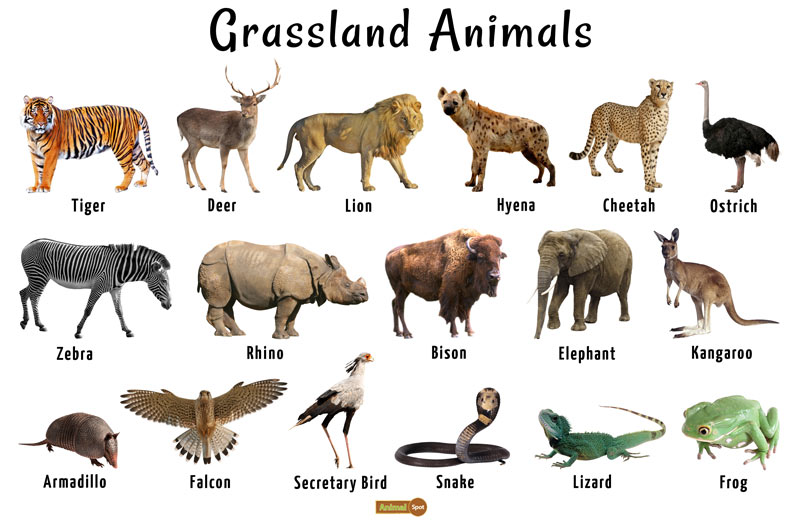
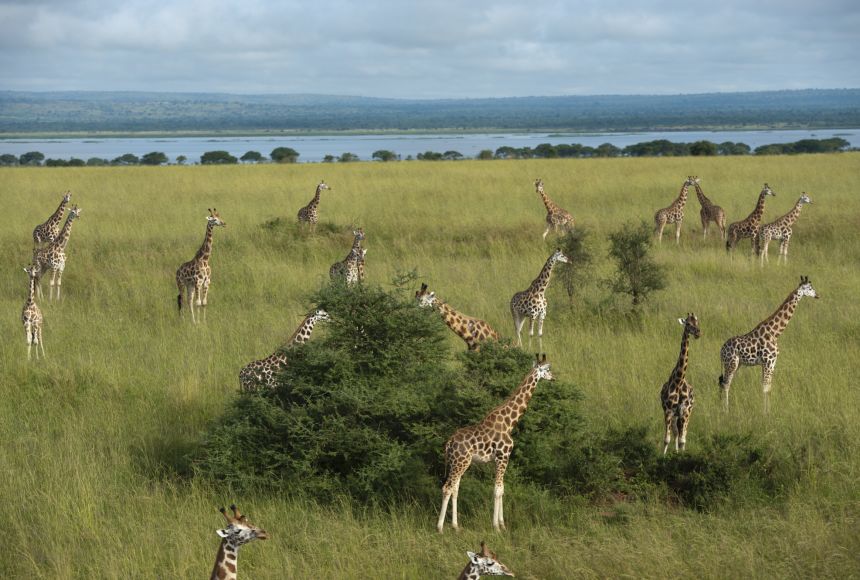


:max_bytes(150000):strip_icc()/164249141-56a006353df78cafda9fb0e5-be1ea8f1f1774e12bde868a948812d8d.jpg)







